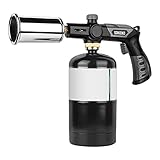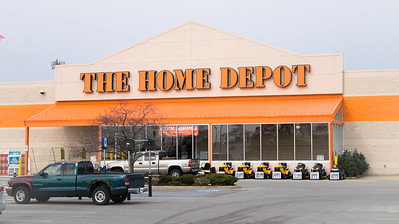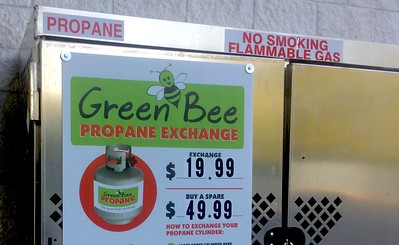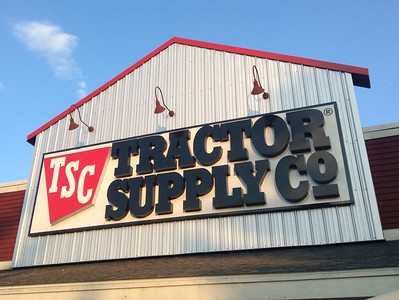
Lowe’s, one of the nation’s leading home improvement retailers, is known not only for its extensive inventory of home goods but also for various services designed to enhance customer convenience. Among these services is the propane tank exchange program.
So, what is this service all about? The propane tank exchange service offered by many Lowe’s locations allows customers to trade in their empty propane tanks for full, pre-filled ones. It’s a straightforward process designed for those who might not want to wait for a refill or who prefer the assurance of receiving a tank that’s been inspected, filled, and sealed by professionals.
But, Is It Available Everywhere?
While many Lowe’s stores offer this service, there might be variations based on:
- The specific Lowe’s location.
- Local and state regulations that may affect the sale and exchange of propane.
- Store size and service capabilities.
To ensure you’re not making a trip in vain, it’s always a wise decision to call ahead. Contact your local Lowe’s store to verify that they indeed provide propane tank exchanges. This call can also give you the opportunity to inquire about:
- Current pricing.
- Any promotions or discounts related to propane exchanges.
- Availability of tank sizes (as some might offer more than the standard 20lb tanks).
How the Propane Exchange Process Works
Using propane for grilling, outdoor heating, or other needs is common for many households. When the tank is empty, instead of refilling the same tank, many opt for propane exchanges. The process is simple, and efficient, and ensures you receive a tank that meets safety standards. Here’s a step-by-step guide:
1. Preparation Before Heading to the Store:
- Check the Tank’s Condition: Ensure your tank is in a condition acceptable for exchange. Tanks that are excessively rusty, damaged, or past their expiration date may not be accepted.
- Ensure Tank is Empty: It’s essential that the tank is empty before exchanging it. If you’re unsure, you can check the tank’s propane level using methods like the water bath method.
- Safety First: Transport the empty propane tank upright and secured, preferably in the back of a vehicle, ensuring it doesn’t tip over during transit.
2. Drop off Your Empty Tank:
- Designated Area: Upon arriving at the store, look for signage indicating the propane exchange area. It’s usually located outside the main entrance.
- Place Empty Tank: There will be a designated area or rack for empty tanks. Place your empty tank there.
Read related article: Can You Exchange a Non-OPD Valve Propane Tank?
3. Choose a New, Pre-filled Tank:
- Access the Full Tanks: In most exchange setups, pre-filled tanks are stored in a locked cage or compartment. Some stores may require you to get an attendant or store associate to access them, while others will provide access once you’ve indicated you’re making an exchange.
- Inspect the New Tank: Before taking a new tank, give it a quick visual inspection. Ensure the tank looks in good condition, without excessive rust or damage. Also, check the manufacture or inspection date on the collar of the tank. While propane tanks have a long life, it’s good practice to get the newest tank available.
4. Complete the Transaction at the Checkout Counter:
- Head to Checkout: With your new, pre-filled tank in hand (or cart), proceed to the store’s checkout area.
- Payment: Inform the cashier you’re doing a propane exchange. They’ll ring up the appropriate fee. This fee is typically less than buying a new tank since you’re essentially just paying for the propane and the service of exchanging.
- Receipt: Always keep your receipt until you’ve successfully connected your new tank and confirmed there are no issues. The receipt may be required for returns or exchanges due to defects.
5. After the Exchange:
- Safe Transport: When transporting your new tank home, ensure it’s upright and secure to prevent tipping or rolling.
- Connecting the New Tank: Once home, connect the tank to your grill or appliance following manufacturer’s guidelines. Ensure all connections are tight and check for leaks using soapy water before igniting.
And there you have it! The propane exchange process is designed for convenience and safety, allowing users to quickly swap out empty tanks for full ones and get back to their activities with minimal disruption.
 |      |      |      |
Lowe’s Propane Exchange Cost
At Lowe’s, exchanging a propane tank typically costs around $19.97 for a 20-pound tank. This price includes the cost of the propane and the service fee for the exchange. It’s important to note that prices may vary slightly depending on the location and any ongoing promotions or discounts.
There are a couple of different ways that you can get propane for your home – you can either refill your own tanks or you can exchange them for full ones. Both have their pros and cons, so it’s important to know what each option entails before making a decision.
The biggest benefit of refilling your own propane tanks is that it’s usually cheaper than exchanging them. You’ll only pay for the propane that you need, rather than paying for a whole new tank. However, it can be a bit of a hassle to refill your tanks on your own. You’ll need to find a place that sells propane and then haul the tanks there to be filled. This can be especially difficult if you have large tanks.
Exchanging your propane tanks is much more convenient than refilling them, but it’s also more expensive. When you exchange a tank, you’ll receive a full one in return. This means that you won’t have to worry about running out of propane or having to go and refill your tanks yourself. However, because you’re receiving a new tank each time, the cost of exchanging propane tanks can add up over time.
Read related article: Are Exchanged Propane Tanks Always Full?
How to save money when exchanging propane tank at Lowe’s
If you’re looking to save money when exchanging your propane tank at Lowe’s or similar retailers, here are some tips to consider:
- Promotions and Discounts: Keep an eye on Lowe’s promotional periods or seasonal sales. They might offer discounts on propane tank exchanges during certain times of the year, especially around major holidays or the grilling season.
- Loyalty Programs: If Lowe’s offers a loyalty or rewards program, sign up for it. You might receive special offers, coupons, or points that can be redeemed for discounts.
- Price Match: Some retailers, including Lowe’s, have price match policies. If you find a lower advertised price for a propane exchange at a competing local retailer, they might match that price.
- Bulk Purchases: If you use propane frequently, consider having multiple tanks. When one empties, you have a backup, allowing you to wait for sales or promotions to exchange the empty one.
- Check the Amount: Ensure you’re getting a full tank in exchange. Some exchange programs might not fill tanks to full capacity. It’s essential to get the best value for the price you pay.
- Newsletter Sign-up: Many stores offer discounts or special promotions for those who sign up for their newsletters. Check if Lowe’s provides such deals.
- Third-party Coupons: Websites or apps might offer coupons or cashback offers for purchases at Lowe’s. Regularly check these platforms for any available deals.
- Ask About Specials: When in-store, it doesn’t hurt to ask the staff if there are any ongoing specials or upcoming promotions on propane exchanges.
- Use Gift Cards: Occasionally, there are promotions on purchasing gift cards (e.g., buy a $50 gift card for $45). If you can get your hands on a discounted Lowe’s gift card, use it for your propane exchange to save some money.
By staying informed and proactive, you can potentially save a considerable amount on your propane tank exchanges at Lowe’s or any other retailer.
Read related article: Are All Propane Tanks Eligible for Exchange? (Considering Factors)
Can you exchange an expired propane tanks
Can you exchange an expired propane tank? Here’s a simplified answer:
1. Expiration Dates: Propane tanks usually expire 12 years from their manufacture date. After that, they need an inspection every five years to be reused. Here’s a video how to check the expiration:
2. Exchange Locations: Most mainstream exchange stations, like those in big retail stores, won’t accept expired tanks due to safety rules.
3. What to Do with an Expired Tank: You can:
- Take it to a specialized propane dealer who might inspect and refill it.
- Dispose of it at local waste facilities that accept propane tanks. Make sure it’s empty first.
4. Safety: Always check older tanks for rust or damage. Using an expired tank can be risky.
In short, while some specialized places might accept expired tanks, most standard exchange spots won’t. Always ensure safety when using propane tanks.
Does Lowe’s sell 20 lb propane tanks?
Lowe’s sells 20 lb propane tanks. You can find them in the store’s camping section. The tanks are made of durable steel and have a capacity of 20 lb (9.1 kg). They are ideal for use with propane-powered appliances such as grills, heaters, and lanterns.
Flame King, Worthington, Bernzomatic, are the popular tank brands in this store. The price starts at $59.98, as of this writing. Again, the price vary depending on the location or store. You can order propane tanks online. However, please be aware that the tank you ordered online will be shipped empty, for safety reason.
Where are propane tanks in the store
There are propane tanks in the back of the store by the lumber. You can also find them near the entrance of the store, near the gardening section.
If you’re looking for a propane tank, Lowes is a great place to start your search. They carry a wide variety of propane tanks, so you’re sure to find one that’s perfect for your needs. Here are some things to keep in mind when shopping for a propane tank: – Propane tanks come in a variety of sizes, so be sure to choose the one that’s right for you.
Will Lowe’s give me credit if I give them empty propane tanks?
While it is possible to return empty propane tanks to some retailers and receive a credit towards the purchase of a new one, this is not the case with Lowe’s. The store does not accept empty propane tanks for any type of credit or refund.
How to get discount when exchanging propane tanks
In order to get a discount when exchanging propane tanks, there are a few things that you can do. First, you can try to find a local exchange program in your area. This can be done by searching online or asking your local propane provider. Second, you can exchange your old tank for a new one at a discounted rate. This is usually done through mail-in rebates or in-store offers. Finally, you can try to negotiate a lower price with your propane supplier. If you have a good relationship with your supplier, they may be willing to give you a discount on your next purchase.
Refilling vs. exchanging propane tanks
There are a few things to consider when deciding whether to refill or exchange your propane tank. Cost is one factor, as refilling your tank will generally be cheaper than exchanging it for a new one. Another thing to think about is convenience – if you have a busy schedule, it may be easier to exchange your tank rather than taking the time to refill it.
However, there are also some benefits to refilling your propane tank. For one, you can control the amount of propane that goes into the tank, so you can be sure that it’s full. Additionally, refilling your own tank gives you the opportunity to check for any leaks or damage before using it again.
Ultimately, the decision of whether to refill or exchange your propane tank depends on your individual needs and preferences. If cost is a major concern, then refilling is the way to go. However, if you value convenience and peace of mind, then exchanging your propane tank may be the better option.
When you exchange propane does it have to be the same brand?
Most people believe that in order to exchange their used propane tank for a full one, they must use the same brand as their last purchase. However, this is not the case. Any licensed company that provides propane gas can fill your tank, regardless of the brand.
The only time you may have to use the same brand is if your grill or other propane-powered device has a warranty that is only valid with that certain brand of gas. Other than that, feel free to shop around and get the best deal on propane, without having to worry about which brand to choose.
Tips for Household Owners
1. Checking the Level of Propane in a Tank
Water Bath Method:
- Fill a small bucket or container with warm to hot tap water.
- Pour the water down the side of the tank.
- Run your hand along the side of the tank and feel for a cool spot. The top of the cool spot indicates the level of the propane.
Weighing Method:
- Most propane tanks have a tare weight (TW) stamped on the handle. This is the weight of the tank when it’s empty.
- Weigh your tank and subtract the tare weight to determine the amount of propane left.
Gauge Attachments:
- Some propane tanks come with built-in gauges or you can purchase gauge attachments. They provide a direct reading of the remaining propane, though accuracy may vary.
2. Ensuring Efficient Use to Maximize the Life of a Propane Tank
Regular Maintenance:
- Keep the propane tank and its connections clean and free of debris.
- Check for any visible damages or signs of wear and tear.
Optimal Grill Practices:
- Preheat your grill only for the required amount of time. Over-preheating wastes propane.
- Turn off the propane tank first before turning off the grill’s burners. This ensures that any residual gas in the line is used up.
Storage:
- Store propane tanks in a cool, well-ventilated area away from direct sunlight.
- Never store propane tanks indoors or in an enclosed space.
Winter Usage:
- Propane becomes less efficient in colder temperatures. Using a propane blanket can help maintain its efficiency during cold months.
3. Advantages of Having a Spare Tank at Home
Uninterrupted Use:
- You’ll never run out of propane in the middle of a barbecue or during any activity requiring propane.
Cost-Efficient:
- Having a spare allows you to wait for sales or discounts when refilling or exchanging tanks.
Safety:
- In the rare event of a malfunctioning tank, you’ll have a backup ready.
Convenience:
- Reduces the frequency of trips to refill or exchange tanks, especially if you use propane regularly.
Emergency Preparedness:
- In case of power outages or other emergencies where propane might be a primary source of energy, a spare tank ensures you’re prepared.
Remember, safety first! Always handle and store propane tanks with care, and ensure that all connections are secure before use. Regularly inspect your tanks and equipment for signs of damage or wear.
FAQs
Why do propane tanks have expiration?
The expiration date on a propane tank is the date when the tank is no longer safe to use. The main reason for this is that the pressure in the tank can build up over time, which can make the tank explode. Propane tanks are also susceptible to rust and corrosion, which can make them unsafe to use. Propane companies typically require customers to replace their tanks every few years to ensure that they are using safe and up-to-date models. This helps to protect both customers and propane companies from liability in case of an accident.
Can you use rusted propane tank?
If your propane tank is starting to rust, you may be wondering if it’s safe to continue using it. The short answer is yes, you can use a rusted propane tank, but you should have it inspected by a professional first.
While a little bit of rust on your propane tank may not seem like a big deal, it can actually cause some serious problems down the road. Rust can weaken the metal of your tank and cause it to rupture or leak. If you do have a leak, it could result in a dangerous fire or explosion.
So, if you do notice any rust on your propane tank, make sure to have it inspected by a professional right away. They’ll be able to tell you if it’s safe to continue using the tank or if you need to replace it.
If You Don’t Want to Exchange, Refill Might Be the Solution for You
Here’s the difference between propane tank exchange and refill:
Conclusion
In summing up, Lowe’s propane exchange service stands as a testament to the brand’s commitment to convenience and customer satisfaction. With a simple swap, users can avoid the waiting time associated with refilling and enjoy the benefits of a professionally inspected and sealed tank. This service not only underscores the convenience that Lowe’s brings to its patrons but also its dedication to offering practical solutions for everyday needs.
Yet, as we reap the benefits of such services, it is paramount to remember the foundational tenets of using propane: safety and efficiency. Propane, while incredibly useful, requires careful handling and storage. Thus, every time you connect a new tank, check for leaks, or store your propane, always adhere to safety guidelines. And as we enjoy the warmth of our grills or heaters, let’s use propane efficiently to maximize its potential while minimizing waste.
Lowe’s offers more than just products; it provides services that fit seamlessly into our lives. Let’s ensure we use them wisely, always putting safety at the forefront.


Mike is an experienced propane technician with over 15 years of professional experience in the field. He has dedicated his career to helping customers with their propane needs, from installation to maintenance and repair. Together with Jeremy, he co-founded this website to provide useful information and guidance to customers seeking reliable propane services.







